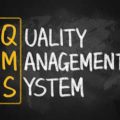
The Quality Management Approach specifies the methods the project will use to ensure quality in its end product. This includes specifying the quality standards the project will aim for, measurements to determine whether or not that standard has been achieved, and quality audits to find areas for process improvement.
Composition
The Quality management approach contains the following items:
- Introduction
The Introduction states the purpose, objectives and scope, and it identifies who is responsible for the document. - Quality management process or procedure
This section outlines the processes and procedures the project will use to ensure the high quality of the end product. These should include:- The approach to quality assurance and planning
- The quality standards the project must meet, metrics to be employed and measurement techniques.
- Project assurance via quality audits and corporate/customer reviews
- Tools and Techniques
Any quality management systems to be used on the project, and how they will be used. These include software, procedures, or any proprietary methods. - Records
How and where the quality records will be kept, and who will be responsible for them. These records include the quality register, quality control measurements, and quality audits, among others. - Reporting
This section describes what the reporting requirements will be, that is, who will be submitting quality reports, to whom, how often, and what the reports will contain. - Timing of quality management activities
The timing of the quality control, analysis, and reporting functions. - Roles and Responsibilities
This defines who is responsible for quality control measurements, quality audits, data analysis and reporting.
Derivation
The Quality Management Approach is derived from 7 sources:
- Project board
The project board provides direction regarding quality control strategies, and minimum quality boundaries of the project. - Project brief
The project brief contains two items that are used to develop the quality management approach:- The project management team structure for roles and responsibilities of project quality management
- The product description for acceptance criteria and definition of quality expectations
- Organizational standards
The quality standards of the organization are inherited by the project. - Supplier and customer quality management systems
Often, suppliers and customers have their own quality systems which must be used by the project. - Change control requirements
The project control procedures are necessary to ensure the project stays within budget, schedule, and quality criteria. - Corporate, program management or customer strategies
The overall corporate objectives of the organization might play a role in product quality standards.
Format and Presentation
There is no prescribed format for the quality management approach, and it can be either:
- A standalone document
- A section of the Project Initiation Document (PID)
- An entry in a project management tool
Quality Criteria
The quality management approach is judged on the basis on six quality criteria:
- The approach clearly defines ways in which the customer’s quality expectations will be met
- The defined ways are sufficient to achieve the required quality
- Responsibilities for quality are defined up to a level that is independent of the project and project manager
- The approach conforms to the supplier’s and customer’s quality management system
- The approach conforms to the corporate, programme management or customer quality policy
- The approaches to assuring quality for the project are appropriate in the light of the standards selected






